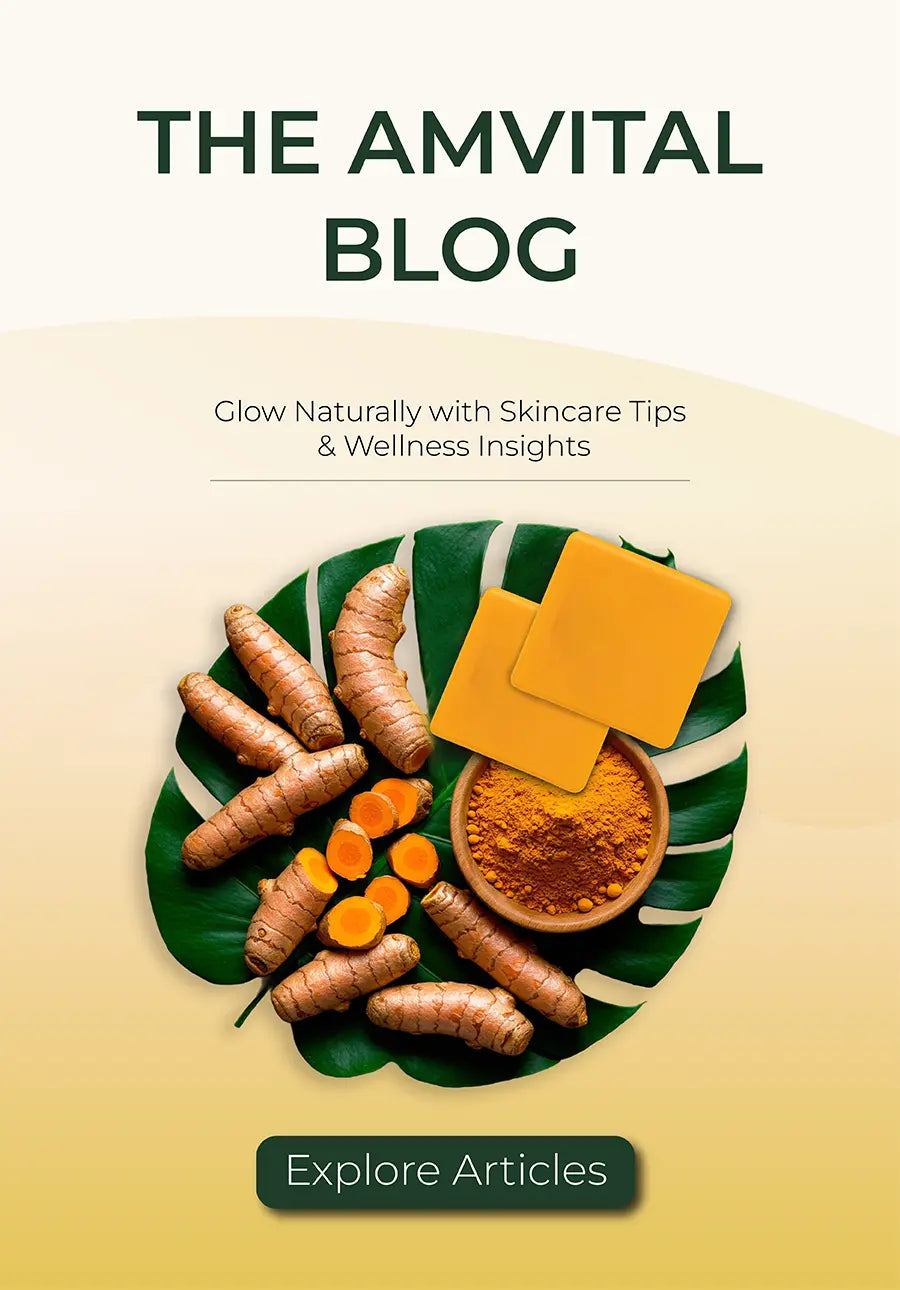Blog

Blog
Expert Endorsed: A Board-Certified Cosmetic Surgeon Recommends AMVital

Blog
Turmeric vs Kojic Acid vs Tranexamic Acid: Which Is Best for Stubborn Dark Spots?

Blog
Popular Brands That Offer Pure Soap Bars | Natural & Chemical-Free

Blog
PIE vs PIH vs Melasma: The Complete Hyperpigmentation Guide for Brown & Black Skin

Blog
Turmeric for Hormonal Acne: Natural Treatment Guide

Blog
Can Turmeric Help Cystic Acne? Complete Guide

Blog
Turmeric vs Salicylic Acid: Which Is Better for Acne?

Blog
Hyaluronic Acid Serum For Your Skin: Expert Advice

Blog
Which Type of Turmeric is Best for Your Face: Powder vs. Extract vs. Serum

Blog
AMVital Safety & Testing: Vegan, Cruelty-Free & Clean Ingredients

Blog
Kojie San vs Turmeric Kojic Acid Soap: Which Is Better for Dark Spots?

Blog
Does Turmeric Help Repair Skin Barrier? Science Explained

Blog
3-Step Minimalist Skincare Routine with AMVital: Simple, Budget-Friendly & Effective

Blog
Why Choose AMVital Over Hydroquinone: Safer Skin Brightening That Works

Blog
The Complete Body Exfoliation Schedule: Your Weekly Calendar for Brighter, Smoother Skin

Blog
Best Turmeric & Kojic Acid Soaps for Dark Skin: A Complete Guide for Melanin-Rich Skin

Blog
Evening Body Routine to Fade Dark Spots: Your 12-16 Week Transformation Plan

Blog
Turmeric Soothing Face Wash FAQ: Your Complete Guide

Blog
Using Turmeric Kojic Acid Soap for Acne Scars, Back Acne, and Uneven Skin Tone

Blog
Why 10,000+ Customers Trust AMVital's Turmeric Skincare



